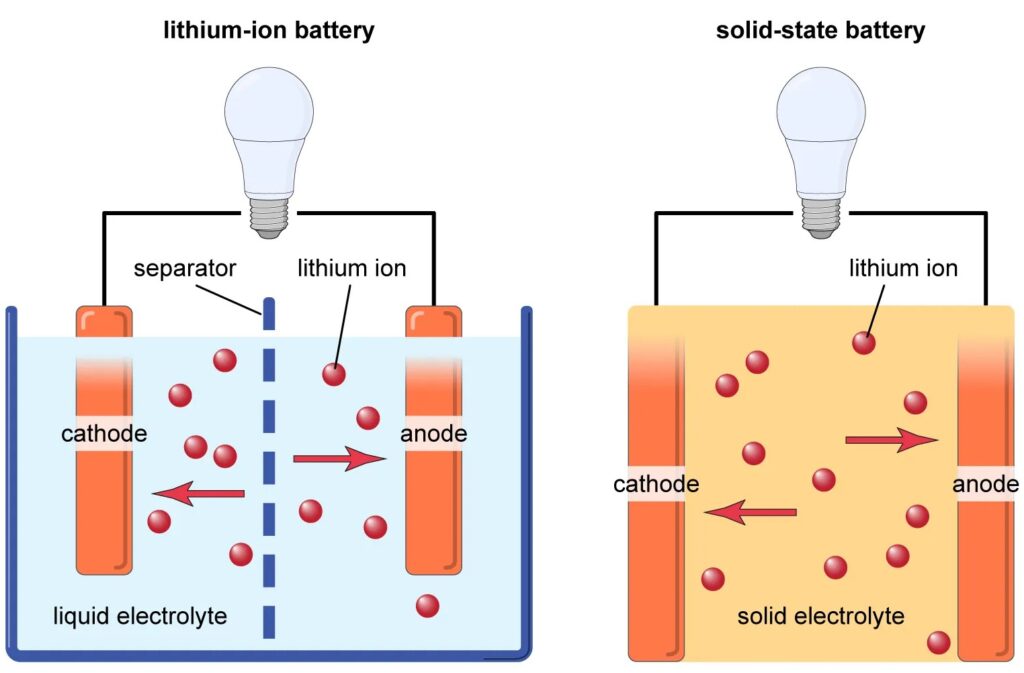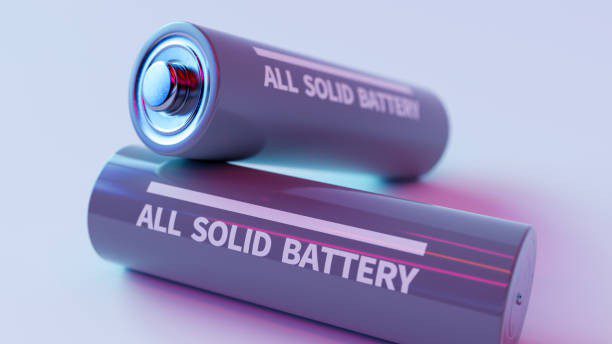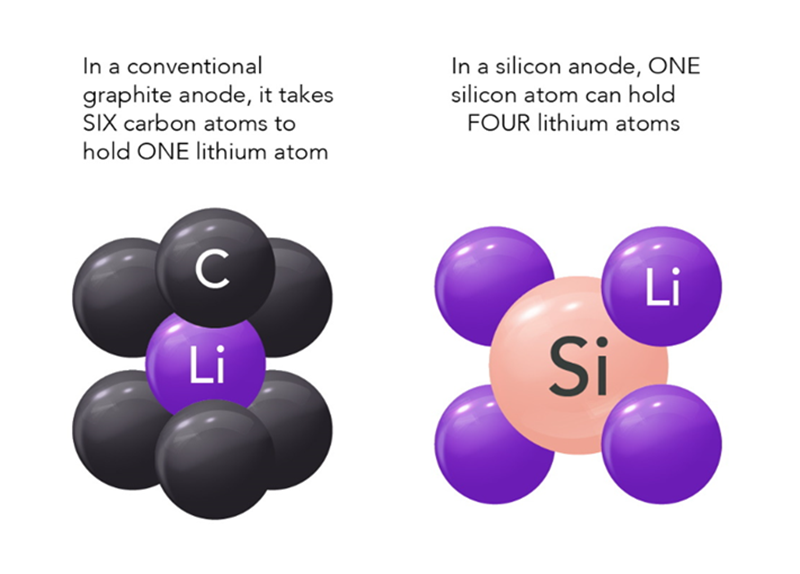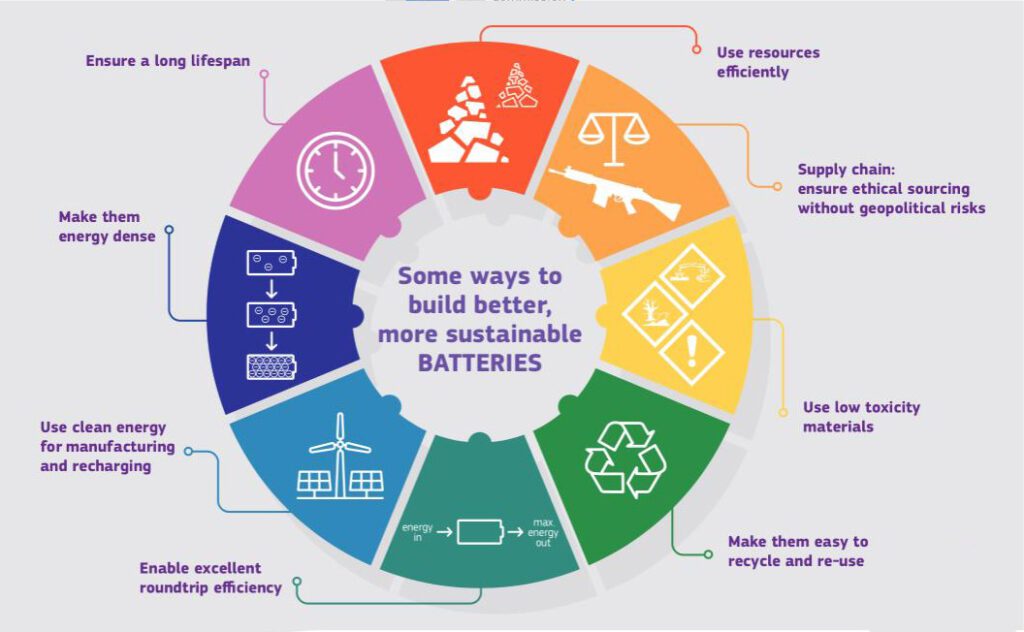The Growing Demand for Sustainable Battery Technology 🪴
The demand for cleaner and more efficient energy sources, as well as the need for sustainable batteries, is rapidly increasing. Solid-state and silicon anode technologies are at the vanguard of this change, with two pioneers competing to transform electric vehicles, renewable energy storage, and more. With a new degree of energy density, faster charging, and increased safety, they represent the breakthrough that will break the impasse of traditional batteries. We delve into the physics, potential impact, and optimistic future of these cutting-edge battery technologies to help us get closer to a sustainable, powered world.
As electric vehicles (EVs) eliminate the need for gas line refueling and renewable energy sources make the grid cleaner and quieter, the demand for sustainable energy storage has never been greater, fueled by the urgent needs of portable devices.
In what has been a significant increase in EV sales internationally, these cars are selling like hotcakes, with 17 million electric vehicles predicted on the road by the end of 2024 alone. Forecasts analyse 85 Million Electric Vehicles Will Be on the Road by End of 2025. Electric Vehicles in Use to Grow 33% in 2025. 73% of Electric Vehicles Will Be Battery Electric Vehicles in 2025.
As a result, there is a desire for high-capacity, long-lasting batteries that meet both consumer and environmental standards. Traditional lithium-ion batteries, which use naturally rare minerals like as lithium, cobalt, and nickel, are currently industry leaders, but they are hitting technical and resource limits.
These minerals are mined and processed, both of which cause significant environmental damage and occasionally raise ethical concerns regarding labor methods. As a result, there is an urgent need for next-generation batteries with increased energy density and sustainable, recyclable materials to help with the green transition without worsening environmental and social issues.
At the same time, renewable energy sources, particularly solar and wind, are being rapidly integrated into national and local grids. These sources are intermittent in nature, demanding efficient, scalable energy storage technologies to stabilize power supply and make renewable energy consistently available. To meet these demands, innovative energy storage systems such as solid state batteries and silicon anode technology are being investigated for higher safety, longevity, and energy efficiency than their traditional counterparts.
Because customers and manufacturers are becoming more environmentally sensitive, there is a surge in demand for sustainable battery solutions in portable electronics. Because these are technology businesses, they are actively researching sustainable materials and alternative battery designs to reduce their products’ environmental impact, with some even establishing recycling programs to obtain and reuse valuable resources.
However, these developments demonstrate why sustainable energy storage solutions for the EV revolution, renewable energy grid stabilization, and portable innovation are critical, all while minimizing environmental impacts.Revolution, renewable energy grid stabilization, and portability enhancement are critical to minimize environmental impact.
What Makes a Battery Sustainable? Key Factors 🗝️
Let’s look at key characteristics of a sustainable battery.
Long Lifespan and High Cycle Stability
A long-lasting battery can withstand hundreds, or even thousands, of charges before losing efficiency. Because of its durability, you will not need to replace it as frequently, reducing waste and costs. When a battery can power devices, vehicles, or even homes for years, it saves resources on new ones, which benefits both the environment and our wallets.
High Energy Density and Efficiency
These batteries are mini powerhouses, compressing more energy into a small, lightweight container. A high energy density battery just performs better, whether it’s an electric vehicle that can go greater distances on a single charge or a phone that can last all day without needing to be recharged. Sustainable batteries use fewer raw materials and make life easier by delivering more power in less space.
Recyclable and Eco-Friendly Materials
Traditional batteries are frequently produced from components that are considered limited and even harmful to recycle. Indeed, sustainable batteries are built from materials that degrade and may be reused, or from readily available resources that have a lower impact on the environment. It is about developing a battery with a second life so that the components can be recycled rather than disposed in dumps.
Low Environmental Impact in Production
It has an impact on the environment because it begins with raw materials and ends with a finished battery. The key to making this cheaper is to utilize sustainable batteries, which are manufactured using water-saving technologies, produce less emissions, and have a lower environmental footprint. What’s the goal? Its goal is to develop batteries that will aid in environmental protection starting with the manufacturing process.
Enhanced Safety Features
However, when it comes to long-lasting batteries, safety is essential. Traditional ‘lytic batteries’ employ liquid electrolytes, which can catch fire under certain conditions; however, modern solid state batteries eliminate this concern due to the use of stable materials. Because there is less risk of overheating or leaking, these batteries are safer for us and our surroundings.
Biodegradability and Reduced Toxicity
Assume a battery that, if dumped in a landfill, will not contaminate the surrounding soil or water. That is why sustainable batteries aim to use biodegradable or non-toxic components whenever possible. As a result, if they are eventually discarded, they will have minimal detrimental environmental impact.
Energy-Efficient Manufacturing and Recycling Processes
And sustainability is more than just the battery; it is also about how it is created and recycled. That means less energy is utilized to produce these batteries, which is healthier for the environment. When we’re ready to recycle, the materials can be returned to the loop and reused to make new batteries, conserving resources and reducing waste.
Ethically Sourced Raw Materials
A good, sustainable battery benefits both people and the environment. These materials were sourced ethically, with no child labor or harmful working conditions. If you choose a procedure that is free of dangerous operating elements, sustainable batteries promote social responsibility and fair trade practices, so selecting responsibly sourced materials is a decision that you can be proud of!
Limitations of Traditional Battery Technologies 🪫
Let’s look at the prominent battery technologies exist today, based on market share. These technologies combined represent the largest segment of the current battery market, each fulfilling certain applications and sectors.
Lithium-Ion (Li-Ion) Batteries:These are the most popular batteries used today. They are used in many devices, including laptops, cell phones, and electric vehicles. Li-ion batteries are rechargeable and have a high energy density, which means they store a lot of energy in a small space.
Lead-Acid Batteries:Lead acid batteries, despite being an older technology, still retain a significant share of the market because they continue to hold their potential in automotive applications such as starting lights and ignition (SLI) systems, as well as backup power sources. They remain popular due to their reliability and low cost.
Nickel-Metal Hydride (NiMH) Batteries:Which are commonly used in hybrid vehicles and other consumer gadgets, provide a good blend of performance and affordability. They are valued for their safety and environmental benefits, and they have a significant presence in certain market groups.
Although widely used, traditional battery technologies are unfortunately plagued with various shortcoming that pertains to the long term stability and efficiency in modern application. For example, lithium-ion (Li Ion) batteries have high energy density but are not very safe—fire risks can arise from overheating, or even simply from the flammable liquid electrolyte in the battery.
Furthermore, lithium, cobalt and nickel extraction is environmentally taxing, and has also been shown to have ethical implications. Furthermore, Li-Ion batteries degrade their performance over time resulting in shorter battery life in a device or an electric vehicle, as well as more frequent replacement of batteries, ultimately increasing e waste.
Lead Acid Batteries are perhaps among the oldest and most reliable battery types, but have an acute shortfall for energy density and weight. This energy-to-weight ratio is far too low for use in cases where size and efficiency are of paramount importance, such as portable electronics and EVs. In addition they have a limited lifespan and are susceptible to sulfation, a process that reduces their capacity if they remain unused for a long time.
At the same time, Nickel-metal hydride (NiMH) batteries used in hybrid cars and consumer devices suffer limitations in weight and energy density versus newer technologies. While less environmentally destructive than some alternatives they have the memory effect where a partial discharge cycle reduces the usable capacity of the battery over time. Taken together, these are drawbacks of traditional battery technology to the demands of modern, sustainable energy storage solutions.
Solid-State Battery Technology 🧬
Solid state batteries have emerged as a viable solution to the limitations of conventional lithium-ion batteries. These batteries have the potential to transform sectors from electric vehicles to renewable energy systems. Solid state batteries seek to improve safety, boost energy density, and extend the total lifespan of energy storage systems by substituting solid materials for the liquid electrolyte found in LIBs.

The primary distinction between solid state and lithium-ion batteries is the state of their electrolytes. Traditional lithium-ion batteries have a liquid or gel electrolyte, whereas solid-state batteries use solid electrolytes. The positive and negative electrodes serve as an anode or cathode, depending on whether the gadget is charging or discharging.
Ceramics, polymers, resins, and glass composites are among the solid electrolytes now under investigation. Lithium-ion batteries have some safety concerns due to their flammability, which can be mitigated by solid state batteries by lowering the danger of leakage, thermal runaway, and dendrite development.
Advantages of Solid-State Batteries in Sustainability and Performance 📊
Solid-state batteries offer several advantages over lithium-ion batteries. Inorganic solid electrolytes are highly unlikely to catch fire. Solid-state batteries are therefore safer to employ in high-temperature situations than lithium-ion batteries. They are also more resilient to cold weather. Lower temperatures cause ions to travel more slowly in liquid and gel electrolytes, reducing battery performance, although this impact is lessened in solid electrolytes.
Increased density enables solid-state batteries to store more energy. A solid-state battery may run a gadget for a longer period of time than a lithium-ion battery of comparable size. Alternatively, a smaller, lighter solid-state battery can power a gadget for the same duration as a larger lithium-ion battery.

Another advantage of solid-state batteries is its flexibility to be cast into a variety of shapes. Typical lithium-ion batteries must be designed to prevent liquid leakage, whereas solid-state batteries, which do not leak, can be made smaller, thinner, and even curved.
Furthermore, inorganic solid electrolytes decay more slowly than lithium-ion batteries. Lithium-ion batteries can only be charged so many times before they become unusable. Solid-state batteries, on the other hand, may be recharged several times more and retain their capacity for far longer than lithium-ion batteries.
Solid-state batteries not only provide superior service but also have a lower environmental impact than lithium-ion batteries. A solid-state battery stores more energy with less material and has a longer lifespan than a lithium-ion battery, all of which contribute to its lower carbon footprint. Solid-state battery manufacturing requires more lithium, but less graphite and cobalt.
Challenges for Solid-State Battery Development and Commercialization 💰
Development and commercialization of solid state batteries are challenging for a few particular reasons. Material compatibility is one significant technical problem since solid electrolytes should exhibit high ionic conductivity and stability over the temperature range and be compatible with the electrode materials. These solid components are prone to degrade in their interfaces, causing performance degradation over time.
Alongside that, scaling up production of solid state batteries from lab scale to mass production is incredibly challenging. Current fabrication methods are complex and insensitive to material properties, thickness, and interfaces, with low yields and the high production cost. In addition, the high cost of materials such as lithium metal anodes and certain solid electrolytes make large scale production cost effective.
To overcome these problems, dedicated efforts in material science and engineering are underway around the world. In particular, novel solid electrolytes with improved ionic conductivity, stability, and interface compatibility have been explored. Effort is also put into manufacturing techniques, and including thin film deposition and scalable fabrication methods to minimize production costs while increasing yield.
The researchers are looking into different types of solid electrolyte, including oxides, sulfides, and polymers, which all have their advantage and disadvantage. They aim to enhance battery energy density, cycle lifetime and safety while retaining a potential for scalable manufacturing. Advancements and new paths to commercialization have resulted from collaborations between academic institutions, government, and industry players, as well as pilot scale production lines.
Silicon Anode Technology ⚙️

Recently, silicon anode technology has become a hot technology in the energy storage industry. With the increasing adoption of battery dependent devices such as electric vehicles (EVs), smartphones and renewable energy storage systems battery demands are also increasing for higher energy densities and longer life.
Silicon anode is a compelling solution to this demand, becoming a game changer for lithium ion batteries. However, unlike traditional anodes that principally harness graphite, silicon anodes provide an incredible improvement in energy storage capacity. This innovative technology presents opportunities to eventually rectify limitations that currently exist, and, thereby, to eventually overcome existing limitations to make more efficient and powerful batteries both possible and commercially viable.
Anodes are important elements of lithium ion batteries as the negative electrode where Lithium ions are stored during charging and removed from anode during discharging. Since graphite is a stable, available, and simple to manufacture anode material, it has been used in traditional batteries. But the performance ceiling for graphite is now being approached, with just 372 milliampere-hours per gram (mAh/g) theoretical capacity. However, this limitation constricts lithium ion batteries’ energy density, making a bottleneck for technologies that require higher power and longer run times. The Future for Batteries Requires Innovation to Beat the Capacity Limitations of Graphite
Sustainability and Efficiency Benefits of Silicon Anodes ✅
Battery capacity and frequent charging capability has been improved with silicon anodes and battery efficiency has been increased. This is unlike traditional graphite anode, which could store up to ten times a lower amount of energy per unit of weight. In a lithium ion battery anodes, silicon can absorb more of those lithium ions and have higher energy density. More battery capacity means longer use from smartphone batteries or EVs, and less frequently a need to charge.
Mitigating silicon’s swelling issue during charging cycles has also been a focus of innovations in engineering and manufacturing that have resulted in the development of nanostructured silicon and silicon graphites composites which bring together a high capacity and high stability while improving battery efficiency and user experience.
The shift to a graphite alternative has a lot of environmental benefit. Despite being resource intensive and generally associated with large amounts of ecological disruption, graphite mining can be particularly destructive, deforestation, water pollution and high carbon emissions from extractive processes. On the anode side, silicon can more readily replace graphite which is rare and destructive to the environment.
Since silicon can often be sourced from sand or recycled electronic waste, the environmental footprint of battery manufacturing can be cut by using technology that replaces cobalt with silicon. Transitioning to silicon anodes not only accelerates goals for improving energy storage but also is part of the path to making the battery industry more sustainable and environmentally friendly, reducing pressure on natural graphite reserves, and meeting global climate goals.
How Solid-State and Silicon Anode Batteries Could Transform Energy Storage in Future 🔋
If solid state batteries, particularly those combined with silicon anodes, are widely used in electric vehicle (EV) and grid storage, the impact on the energy landscape and emissions would be fundamentally different. Solid state technology outperforms conventional lithium ion batteries in terms of energy density, cycle life, and safety, addressing the most pressing issues with EVs such as range anxiety and charging time.
As the cost of solid-state batteries falls, they will accelerate the global adoption of electric vehicles, reducing greenhouse gas emissions and hastening the transition to greener vehicles. The increased stability and longevity of these batteries can allow for the large-scale integration of renewable energy into grid storage, providing a technologically robust, high-capacity solution for storing solar and wind energy to create a stable electrical grid and making renewable energy more dependable and economical.
We have good prospects for future breakthroughs and hybrid solutions that combine solid-state electrolytes and silicon anodes, which is a really fascinating area for the battery business. However, energy storage capacity may be considerably increased using silicon anodes that face stability concerns, and integration with solid state designs can assist address issues with expansion and deterioration.
This hybrid method can lead to batteries with unparalleled performance characteristics, reshaping the sustainable energy market by increasing the efficiency and availability of renewable-powered EVs and grid systems. Furthermore, advancements in battery technology may enable the expansion of new markets, such as electric aviation and off-grid uses, resulting in far-reaching benefits for a greener and more sustainable future.
FAQ 💡
What are solid-state batteries, and how do they work?
Solid-state batteries are a next-generation energy storage technology that uses solid electrolytes instead of liquid ones. They offer higher energy density, improved safety, and longer lifespans compared to traditional lithium-ion batteries.
Why is silicon considered a game-changer for battery anodes?
Silicon anodes can store up to 10 times more energy than traditional graphite anodes, making them a key component in developing high-capacity, sustainable batteries for the future.
What are the advantages of solid-state silicon anode batteries?
Solid-state silicon anode batteries offer higher energy density, faster charging times, enhanced safety, and reduced environmental impact compared to conventional lithium-ion batteries.
Are solid-state silicon anode batteries commercially available?
While solid-state silicon anode batteries are still in the research and development phase, several companies are making significant progress toward commercialization, with some prototypes already in testing.
How do solid-state batteries contribute to sustainability?
Solid-state batteries use non-toxic, abundant materials like silicon and eliminate the need for flammable liquid electrolytes, reducing environmental harm and improving recyclability.
What challenges do solid-state silicon anode batteries face?
Key challenges include high production costs, scalability issues, and overcoming silicon’s tendency to expand during charging, which can affect battery longevity.
How do solid-state batteries compare to traditional lithium-ion batteries?
Solid-state batteries are safer, have higher energy density, and longer lifespans than traditional lithium-ion batteries, but they are currently more expensive to produce.
What industries could benefit from solid-state silicon anode batteries?
Industries such as electric vehicles (EVs), consumer electronics, renewable energy storage, and aerospace could significantly benefit from the enhanced performance and sustainability of these batteries.
What is the future outlook for solid-state silicon anode batteries?
The future looks promising, with ongoing advancements in material science and manufacturing techniques expected to make solid-state silicon anode batteries more affordable and widely available within the next decade.


